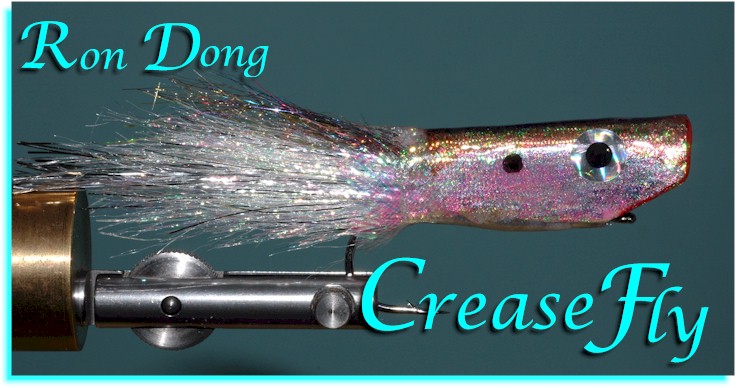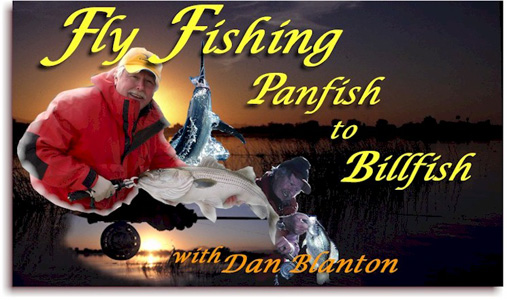
Ron Dong’s Version of the Joe Blados Crease Fly
AKA – the RDCF

How I came to develop my version of the Crease Fly
By Ron Dong
In the sea of Cortez every game fish from dorado to marlin eat a small baitfish the locals call sardinas. These small herring-like baitfish are used for live chum to incite offshore species into feeding frenzies. Accordingly we Baja fly fishers often tie patterns to represent them. It just makes sense.
I happen to love the wild surface action that can be experienced on the Sea of Cortez and over the years I have used many styles of poppers, sliders and gurglers to entice game fish to blow holes in the sealing of the sea. For me, the surface take is the ultimate thrill. When I first used Joe’s Crease Fly, I was especially impressed with it’s fish-shaped body, they way it rode on the surface and it’s action. It produced extremely well for Baja species. I bought a Crease Fly tying kit made by Orvis and began tying Crease Flies which I thought could pass for a sardina. They worked well enough but I felt I could improve on the fly I was tying. After about four years of experimentation with shape, hooks and materials, I’ve settled on what I have today. I suppose it is different enough from Joe’s original version that I could have named it something else but I felt it nonetheless was still a Crease Fly and I wanted to keep the root name out of respect for Joe Blados.
My objective was to more closely represent a sardina in size, shape and color. It had to have increased durability, maximize flash and be able to land a marlin. The Mylar tubing gives the fly increased rigidity and abrasion resistance. I’ve heard of as many as 25 bluefish caught on one of these Crease Flies. The flash comes not only from the heavy use of new synthetics, but from the side to side swimming action as you “walk the dog”. Best of all, I’m happy to hear that many fly fishers are reporting success on many different species using this fly. Dan Blanton recently returned from an extended trip to the Gulf of Carpentaria, Australia where he found the RDCF was a hit with many species from longtail tuna to queenfish and trevally species.
There are quite a few steps to tying my RDCF but the result is worth the time and effort. You may find a way to shorten the tying process but I’ve provided the complete tying instructions I use. All the photos taken to illustrate the tying steps were taken by my old friend, Dan Blanton.
Materials List
Hook: – 3/0 Owner Spinnerbait or equivalent
Tail: – Pearl Polarflash or mixture of pearl Mylar and silver Flashabou
Silver Flashabou (flashtail)
Mixture of Olive and Silver gray Yak hair, brown Super Hair or
Silky Fiber
Mixed Color Krystal Flash
Rainbow Angel Hair
Body: – 2 mm thick, white, sticky back craft foam
Silver transfer foil or silver paint
3/4” water pipe insulation
Pearl jumbo Mylar tubing (Doug’s Bugs)
3/8” silver flat stick-on eyes
Felt permanent markers – red, brown, black (Sharpie or Sanford)
